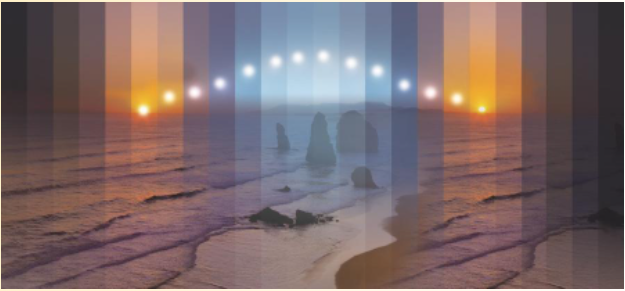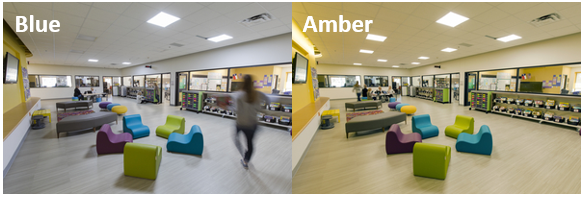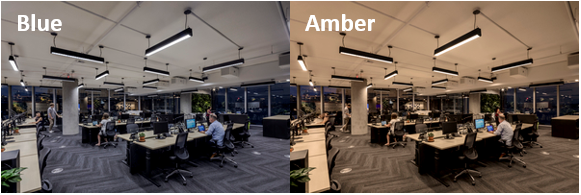Did you know that lighting in the workplace could negatively influence your employee’s productivity, wellbeing, and mood? However, the implementation of human centric lighting in the workplace will assist in ensuring your employees are less agitated and more productive. This article introduces you to human centric lighting, explaining its effects on your employee’s health and gives an overview of what you should look at when installing a human centric lighting system in your workplace.
What is Human Centric Lighting?
Human centric lighting is the process of creating lighting in an area so that it can imitate natural daylight. This natural daylight drives our bodily functions. Implementing this process in the workplace will enhance human performance, comfort, health, and well-being.
Apart from vision which allows humans to identify brightness, shapes, colours and images, light also influences our biology. It impacts our hormones, alertness, attention as well as fatigue and influences our body clock and circadian rhythm.
As a result of this, human centric lighting is a holistic approach that must consider all aspects of how a lighting system will affect people in a workplace as it will have an influence on their wellbeing, productivity, or mood.
How does Human Centric Lighting affect Health?
The circadian rhythm is a 24-hour running clock that runs in the background of your brain and cycles between sleepiness and alertness at regular intervals. As it responds to lightness and darkness, too much or too little exposure to these types of light will start to affect the behaviour as well as the personal health of a person. If a person is exposed to a reduced amount of light during the day, it will result in melatonin levels decreasing causing them to not have a peaceful sleep. This causes the person to be sluggish, tired, and less productive during the day. If the intensity of the light and colour temperature is adjusted in a workplace, it will result in employees having fewer symptoms, fewer trips and falls and are less agitated.
Quantifying the Effect
The melanopic/photopic (MR) ratio is a metric that is used to quantify lightings circadian effect. Warm colour temperatures are around 2,200K and have a low MR as they have less blue/cyan content. This makes them ideal for relaxation and preparation for sleep. Cool colour temperatures are around 6,500 K and tend to have a high MR. These lights have more blue/cyan content which suppresses melatonin and are ideal for daytime alertness and productivity in factories or offices.

Incorporating Human Centric Lighting in your Workplace
The four parameters that require attention when installing human-centric lighting are spectrum, intensity, time, and duration as well as distribution.
Spectrum:
Blue wavelengths that are present in light are the biologically active parts. Hence, cool white lights that have wavelengths in the blue spectrum are used to simulate the morning and provides a boost when high concentration and alertness is needed. Warm light is required in the evening to aid relaxation and rest.
Intensity:
Intensity is essential as studies conducted showed that a certain amount of light is required to influence biological processes in the human body. It is important to implement solutions that provide the right amount of light, but also unwanted glare and energy consumption should be considered.
Timing and Duration:
Light is most effective in the morning as it indicates to persons biological clock that the day has begun, and bodily functions are required to be activated. Also, the exposure of light in the evening will suppress the production of melatonin and make it difficult to sleep at night.
Distribution:
To ensure light has a biological effect on our bodies, our eyes are required to perceive bright areas in the room as effectively as possible. The receptors that affect our circadian system are sensitive in the lower and nasal part of the eye therefore illumination of surfaces in the upper part of the field of view is required.
Human centric lighting focuses on the people that are using the workspace and their need for natural light. As stated before, a neutral or cool white colour of light will promote activity whilst a warm colour in the workplace will promote relaxation. As seen in figure 2, it is best to implement lighting with a cool white colour temperature in the mid-morning to replicate the natural light during that period and gradually phased throughout the day as it will assist in supporting the circadian rhythm.

As the day goes on, a colour shift is required as daylight will no longer be available. It would be best to change from a cool colour to a warm colour to mimic the sun setting as seen in figure 3.

The implementation of shade automation is also important to adjust the shade positioning as it will assist occupants of the room in avoiding direct glare, heat gain and thermal discomfort.
Resources:
Considering implementing or maintaining a human centric lighting system in your workplace, CHAT to us!
SUBSCRIBE to receive these informative articles, straight to your inbox.
Sources:
https://www.osram.com/os/applications/human-centric-lighting/index.jsp
https://www.buildings.com/articles/27689/what-you-need-know-about-human-centric-lighting


